Are you old enough to remember those glorious days of yore when you couldn’t turn around in the bookstore or walk past the bookrack at your local grocery store without seeing the latest edition of The Destroyer, or The Executioner, or Perry Rhodan #1,000,006? They still exist, but you rarely find them in public because the delicate eyes of decent people must be protected from them. To find them, you’ll usually have to go to the Internet (and thank God for Amazon and Print on Demand technology). Even so, some of the series seem to have fallen on hard times. The cover art on the latter-day Casca novels is cartoonish and hard to look at. Some of the more daring works have been suppressed, but that’s for another post.
Others become popular, then fade into relative obscurity, only to be rediscovered by a new generation of readers later. The works of Edgar Rice Burroughs are among these. At times in the past his books were all over the shelves. At other times you were hard-pressed to find them. These books are among my perennial favorites. Enough so that I collect them. They have been around for a long, long time, and while they may wane in popularity at times, there is always a group of ERB fanatics in the background. Like many towering figures of the past, he is often denounced today, if he is mentioned at all. What was natural in his own time is now sexist, racist, and every other kind of –ist that offends the pseudo-enlightened of our time.
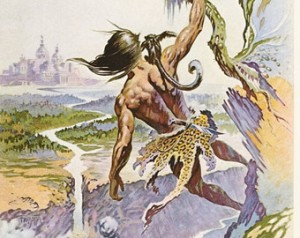 If you’re like most people, the name Edgar Rice Burroughs won’t sound familiar. However, if you’re like most people, you’re very familiar with his work. ERB created the iconic Tarzan of the Apes character that simply refuses to die. Tarzan has been adapted to other media relentlessly over the last century, but none have ever matched the quality of the books. The 24 books of the Tarzan series would have been quite an achievement if he had stopped there, but he wrote dozens more in several different series as well as some stand-alone works.
If you’re like most people, the name Edgar Rice Burroughs won’t sound familiar. However, if you’re like most people, you’re very familiar with his work. ERB created the iconic Tarzan of the Apes character that simply refuses to die. Tarzan has been adapted to other media relentlessly over the last century, but none have ever matched the quality of the books. The 24 books of the Tarzan series would have been quite an achievement if he had stopped there, but he wrote dozens more in several different series as well as some stand-alone works.
The best known of these other series is the 11-book “John Carter of 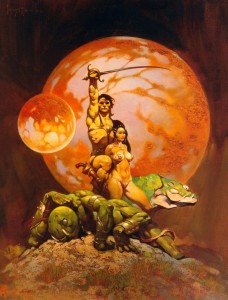 Mars” series. If that sounds familiar, it’s because of the ill-fated 2012 movie titled simply “John Carter”. The movie was made for the 100th anniversary of the 1912 story “A Princess of Mars”. The movie itself is good and faithful to Burroughs’s vision, but ineptly promoted. The inexplicable decision was made to change the original title, which let the reader know exactly what to expect, to “John Carter”, which sounded like it might be about an accountant. Other brilliant ideas included movie posters which were pure black with nothing other than the unexplained letters “JCM” on them.
Mars” series. If that sounds familiar, it’s because of the ill-fated 2012 movie titled simply “John Carter”. The movie was made for the 100th anniversary of the 1912 story “A Princess of Mars”. The movie itself is good and faithful to Burroughs’s vision, but ineptly promoted. The inexplicable decision was made to change the original title, which let the reader know exactly what to expect, to “John Carter”, which sounded like it might be about an accountant. Other brilliant ideas included movie posters which were pure black with nothing other than the unexplained letters “JCM” on them.
If you can put yourself into the mindset of an early 20th Century reader, the books still hold up pretty well.
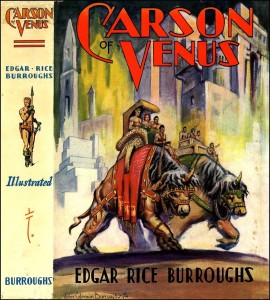 Another series is the “Carson of Venus” series. A 5-book series about an interplanetary Wrong Way Corrigan. The “Pellucidar” series is one of the earliest of the “hollow Earth” tales. The “Caspak” series gives us “lost world” stories, as in “Oh, my god! There’s dinosaurs here!” The “Moon Maid” series is pretty much what it sounds like. The “Mucker” series is straight up Westerns. There are jungle stories, historical novels, and other assorted odds and ends. These are fast and fun reads. None of them are long. Many are less than 200 pages. Even though they are slim books, I always felt like I got 500 pages worth of action and adventure. Some people have disparaged ERBs books as “brain candy”. Screw ‘em, candy is delicious. If you prefer for men to be men, women to be women, villains to be villains, and savages to be savages, you will probably like these books.
Another series is the “Carson of Venus” series. A 5-book series about an interplanetary Wrong Way Corrigan. The “Pellucidar” series is one of the earliest of the “hollow Earth” tales. The “Caspak” series gives us “lost world” stories, as in “Oh, my god! There’s dinosaurs here!” The “Moon Maid” series is pretty much what it sounds like. The “Mucker” series is straight up Westerns. There are jungle stories, historical novels, and other assorted odds and ends. These are fast and fun reads. None of them are long. Many are less than 200 pages. Even though they are slim books, I always felt like I got 500 pages worth of action and adventure. Some people have disparaged ERBs books as “brain candy”. Screw ‘em, candy is delicious. If you prefer for men to be men, women to be women, villains to be villains, and savages to be savages, you will probably like these books.

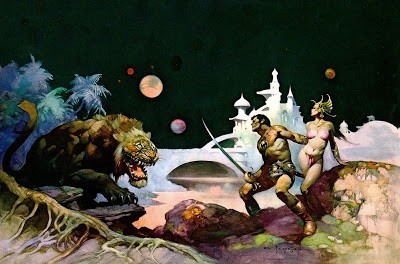
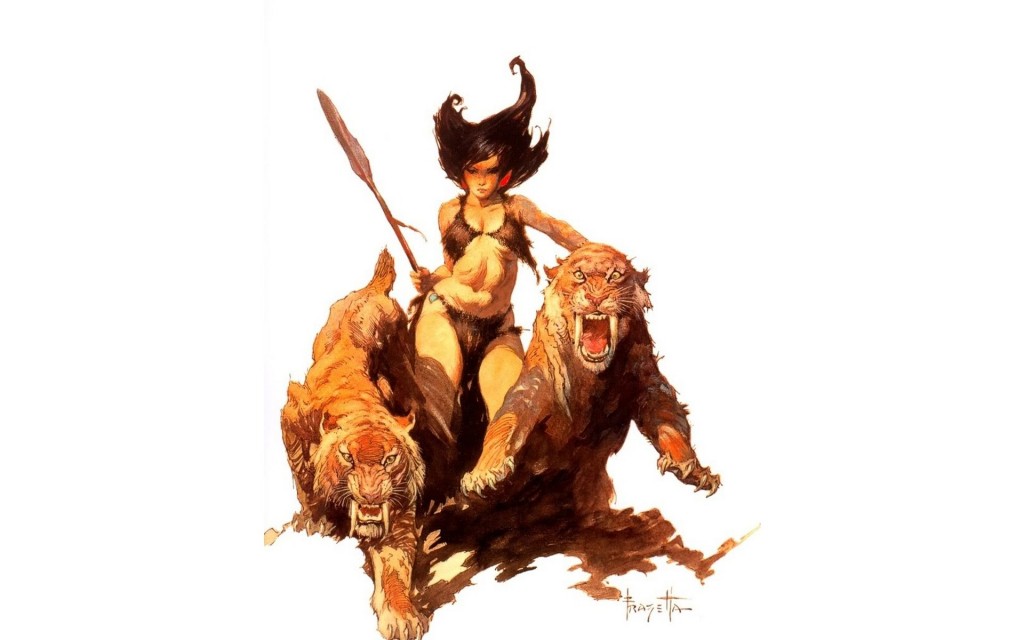
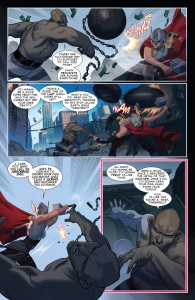

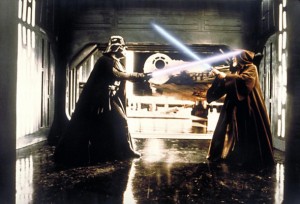


 ial gravity everywhere in the Ark, too–even the sections not spinning. The ace mechanic (a woman, of course) manages to fix heavy machinery on a regular basis without even getting her hands dirty, and while maintaining a perfect manicure. Because booty. (That’s right, this actress, though typically skinny, has the nicest rump you may see on TV, and she’s also smokin’ hot above the shoulders. But you’ll only get treated to the full package when she’s first introduced.)
ial gravity everywhere in the Ark, too–even the sections not spinning. The ace mechanic (a woman, of course) manages to fix heavy machinery on a regular basis without even getting her hands dirty, and while maintaining a perfect manicure. Because booty. (That’s right, this actress, though typically skinny, has the nicest rump you may see on TV, and she’s also smokin’ hot above the shoulders. But you’ll only get treated to the full package when she’s first introduced.)

 It’s not the highbrow stuff you see touted on some manosphere blogs, though. Dude-lit isn’t for the wine-sipping, chess-playing side of your personality. It’s for the beer-slamming, ball-playing , trash-talking side.
It’s not the highbrow stuff you see touted on some manosphere blogs, though. Dude-lit isn’t for the wine-sipping, chess-playing side of your personality. It’s for the beer-slamming, ball-playing , trash-talking side.

 The late ’30s and early ’40s are known as the Golden Age of comic books. Superman came on the scene in 1938, and inspired a boom in comic book heroes. Another cultural phenomenon had infested society during the Depression years, evidently (though far more surreptitiously): bondage and female domination.
The late ’30s and early ’40s are known as the Golden Age of comic books. Superman came on the scene in 1938, and inspired a boom in comic book heroes. Another cultural phenomenon had infested society during the Depression years, evidently (though far more surreptitiously): bondage and female domination. Suprema was given a skimpy costume that was scandalous for its time. Though a corset/push-up bra, short-shorts (or a tiny-miniskirt) and tall boots would become fashion for some women half a century later, the only women who wore such an outfit in those days either performed in kinky stag films or posed for kinky stag mags. Bondage toys were added to Suprema’s utilities: slave shackles on her wrists that could deflect bullets, and a magic golden lasso that forced confessions from the person bound by it.
Suprema was given a skimpy costume that was scandalous for its time. Though a corset/push-up bra, short-shorts (or a tiny-miniskirt) and tall boots would become fashion for some women half a century later, the only women who wore such an outfit in those days either performed in kinky stag films or posed for kinky stag mags. Bondage toys were added to Suprema’s utilities: slave shackles on her wrists that could deflect bullets, and a magic golden lasso that forced confessions from the person bound by it.

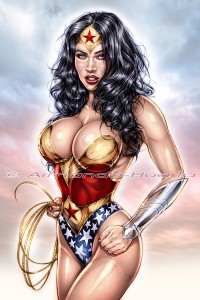
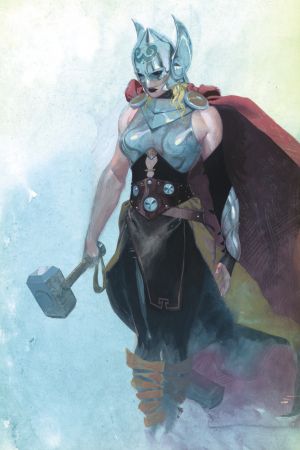
 nothing new. White Knights all over comicdom got tingles up their legs when Frank Miller introduced a female Robin in the mid ’80s. And Marvel’s Captain Marvel (not to be confused with the original, who got his powers from a wizard named Shazam) had a counterpart called Miss Marvel. Eventually Miss became Captain and who knows whatever happened to that guy once the gamma suits in the bullpen stripped him of his mask and tights.
nothing new. White Knights all over comicdom got tingles up their legs when Frank Miller introduced a female Robin in the mid ’80s. And Marvel’s Captain Marvel (not to be confused with the original, who got his powers from a wizard named Shazam) had a counterpart called Miss Marvel. Eventually Miss became Captain and who knows whatever happened to that guy once the gamma suits in the bullpen stripped him of his mask and tights.